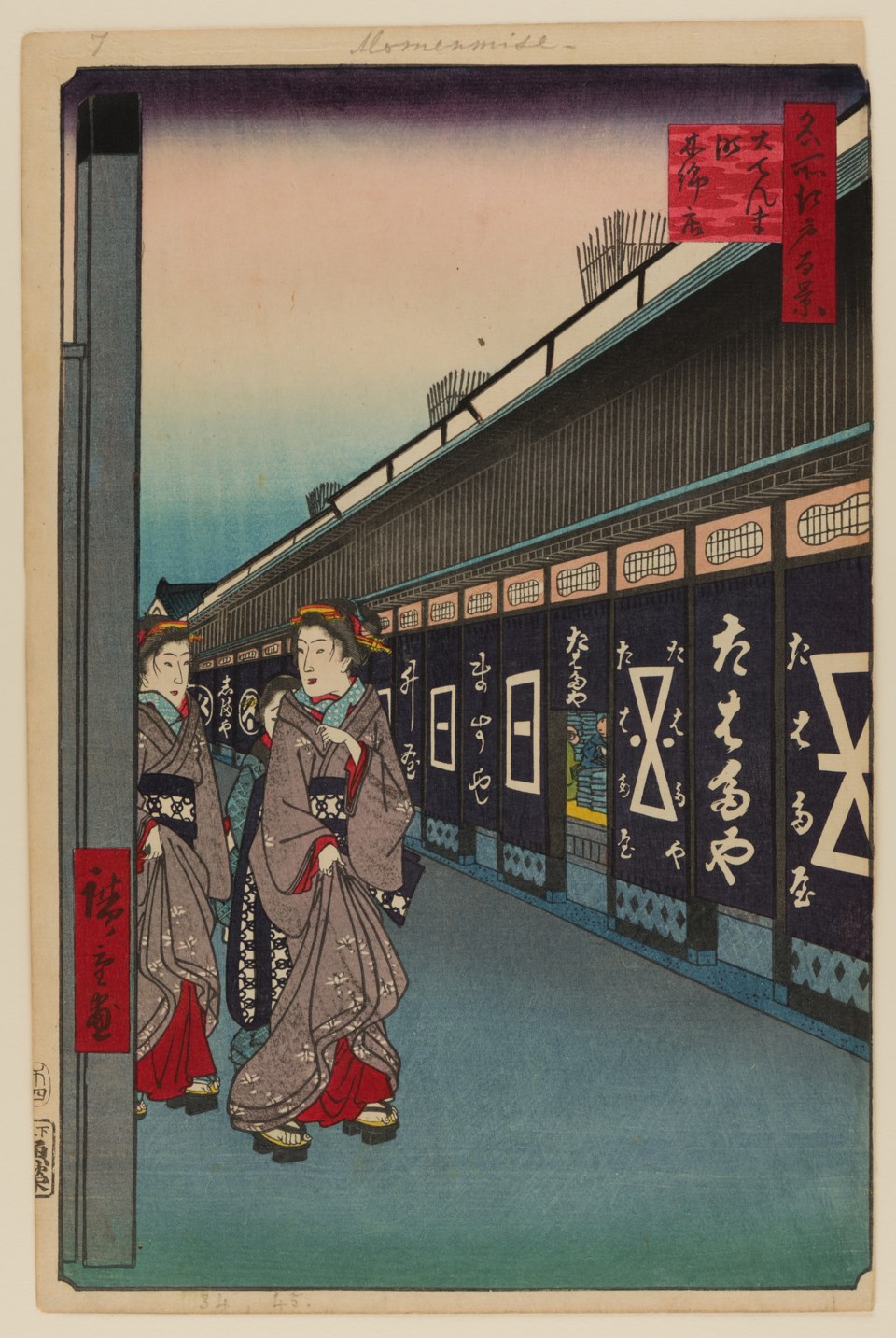Starting on April 5, 2024, the Brooklyn Museum will present the complete set of 118 prints from Japanese artist Utagawa Hiroshige. Hiroshige’s 100 Famous Views of Edo (feat. Takashi Murakami) will be on view for the first time in more than two decades. The print series will be displayed alongside a special installation of new paintings by Japanese artist Takashi Murakami, created in direct response to Hiroshige’s designs.
The Brooklyn exhibition focuses on the distinctive urban landscape of Edo (modern-day Tokyo) and the environmental changes to the city in the 165 years since Hiroshige depicted it. Additional objects from the Museum’s rarely seen collection of Japanese folk art and household objects offer an immersive look into the lives of everyday people in Hiroshige’s Edo. Taking the viewer in a more fantastic direction, Murakami radically reimagines Hiroshige’s iconic designs, further disrupting the practice of considering the prints as source material for European inspiration.
“Hiroshige’s series is a loving tribute to a city, rendered with an insider’s knowledge. The exhibition celebrates the formal qualities of the prints, which were radical in their own time, but it also decodes details in the Views to reveal the distinctive characteristics of Edo’s many neighborhoods. Hiroshige’s original audience would have enjoyed the prints for their ability to capture the beauty and culture of a city they knew well. It can be difficult to imagine that these bucolic landscapes would turn into Tokyo, but our aim is to help understand that transition by rooting the Views in real life,” says Joan Cummins, Lisa and Bernard Selz Senior Curator, Asian Art.
The tension between the natural and man-made environments of Edo remains a throughline in the exhibition, which notes the strengths and flaws of city planning throughout the years, offering comparison with other major cities (including New York). Other concerns visible in Hiroshige’s imagery were specific to mid-nineteenth-century Japan: social and economic stratification, environmental challenges posed by Edo’s watery location, and the constant threat of earthquakes and fires.
Takashi Murakami’s treatment of the subjects and compositions in Hiroshige’s prints offers a different link to the present. Although he is celebrated for his pop sensibility, Murakami has always had a strong interest in Japanese art history, referencing the styles and imagery of historical paintings in his work throughout his career. In recent years, he has turned his focus to the lively subjects and graphic styles of Japanese color woodblock prints. Whereas his previous work has sampled from multiple print sources to create complex compositions, for this project, Murakami looks to Hiroshige’s individual print designs, creating brand-new imagery that will debut in this installation.
Hiroshige’s 100 Famous Views Of Edo (feat. Takashi Murakami) will be on view from April 5 to August 4, 2024.



.png;w=120;h=80;mode=crop)
